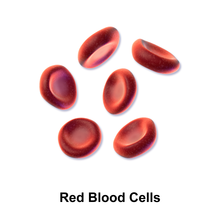| Congenital dyserythropoietic anemia | |
|---|---|
| Other names | CDA[1] |
 | |
| CDA causes decrease in red blood cells. | |
| Specialty | Hematology |
| Symptoms | Weakness[2] |
| Types | CDA Type I, CDA Type II, CDA Type III, and CDA Type IV[1] |
| Diagnostic method | Genetic testing[3] |
| Treatment | Blood transfusions(also depends on which type)[4] |
Congenital dyserythropoietic anemia (CDA) is a rare blood disorder, similar to the thalassemias. CDA is one of many types of anemia, characterized by ineffective erythropoiesis, and resulting from a decrease in the number of red blood cells (RBCs) in the body and a less than normal quantity of hemoglobin in the blood.[2] CDA may be transmitted by both parents autosomal recessively or dominantly.[citation needed]

- ^ a b RESERVED, INSERM US14 -- ALL RIGHTS. "Orphanet: Congenital dyserythropoietic anemia". www.orpha.net. Archived from the original on 3 January 2018. Retrieved 2 January 2018.
{{cite web}}: CS1 maint: numeric names: authors list (link) - ^ a b Cite error: The named reference
genwas invoked but never defined (see the help page). - ^ "Congenital dyserythropoietic anemia - Conditions - GTR - NCBI". www.ncbi.nlm.nih.gov. Archived from the original on 27 May 2018. Retrieved 2 January 2018.
- ^ Cite error: The named reference
bldwas invoked but never defined (see the help page).